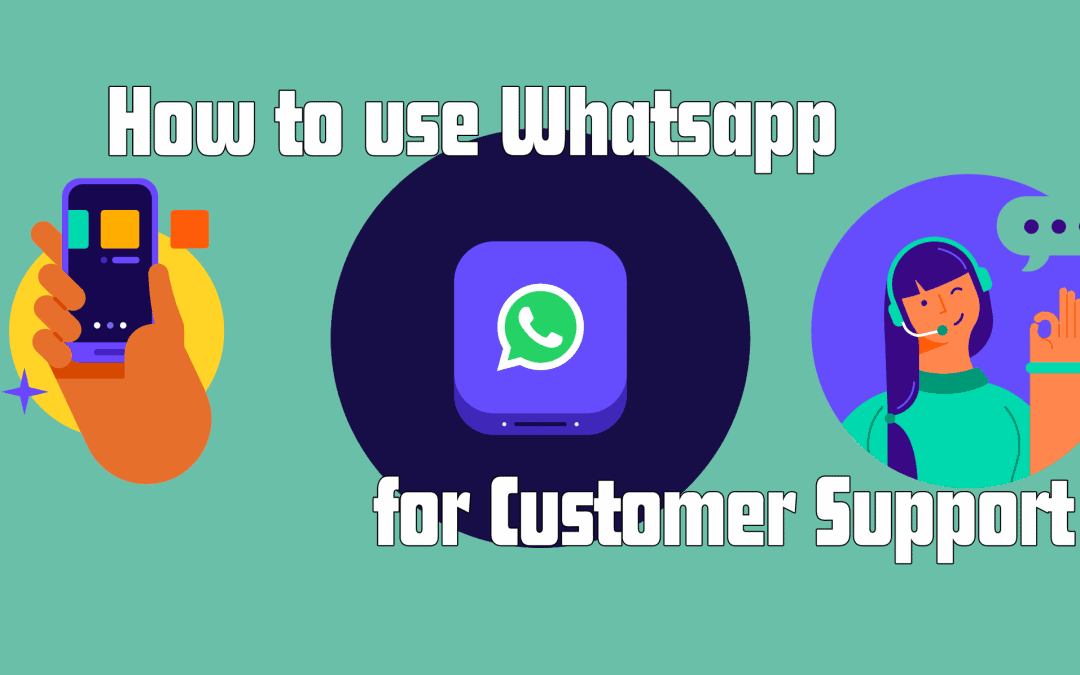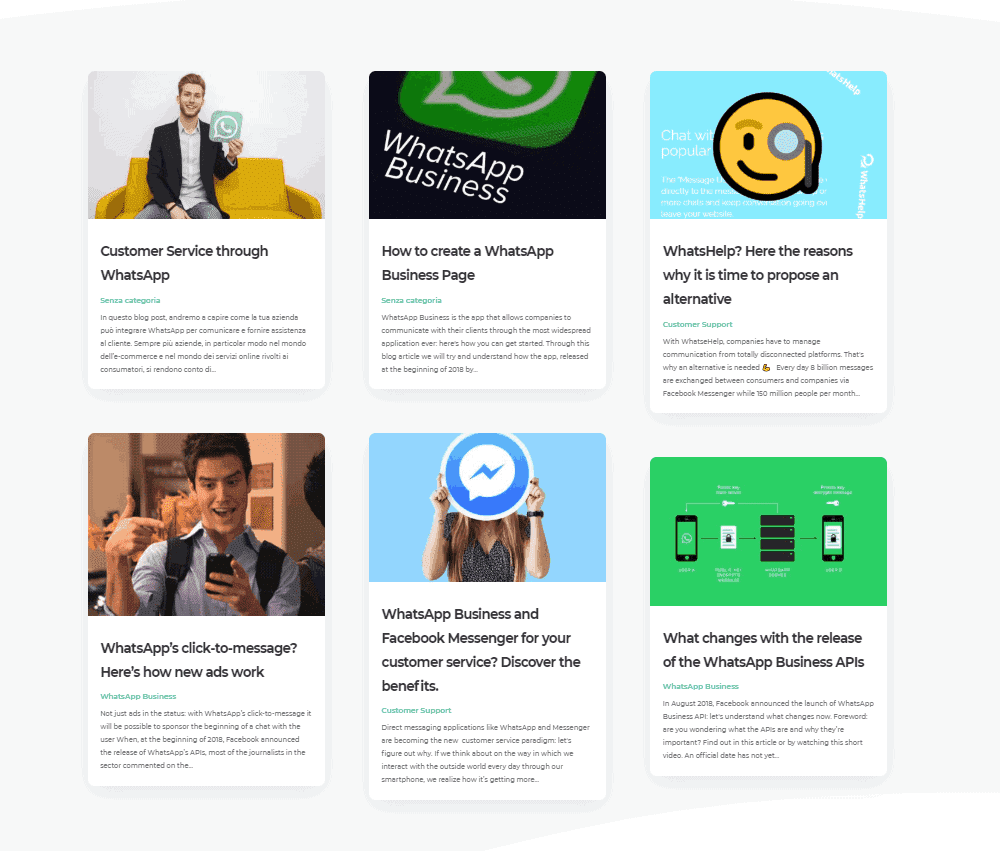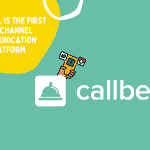In this blog post, we’ll understand how your company can integrate WhatsApp to communicate with the client and provide customer support.
More and more companies, especially in the e-commerce world and in the world of online services for consumers, realize how important it is to be able to provide a quality customer service to their clients, regardless of the channel they use.
Nowadays companies are no longer free to choose which channels they can offer their customer: the company must be present and reachable on every possible channel, and not l just via the traditional channels such as e-mail and telephone anymore.
Social media and direct messaging applications, including WhatsApp, have become indispensable tools for achieving consumer satisfaction. So let’s try to understand how you can integrate the most widespread app in the world within your own customer service.
There is no need to waste time describing the reasons why your company should be reachable through WhatsApp: in 2018 the app had over 1.5 billion active users in 180 countries around the world and its growth doesn’t seem destined to stop anytime soon.
Despite this, until August 2018, the only solution available to use the app in order to provide assistance to the customer was via WhatsApp Web, where it was possible to assign the channel’s responsibility to just one single person.
It was not possible to sort the chats on more people because WhatsApp did not provide public APIs. On August 1st, 2018, WhatsApp finally announced the release of its APIs to the general public, finally allowing companies to integrate this channel into their customer service, aside from being able to send transactional messages (ie: order confirmation, shipping confirmation, password reset, boarding pass, etc …).
So let’s see what steps your company must follow in order to integrate this channel among the options available to provide support (and why not, sell) through the most popular direct messaging app in the world.

As you know, it’s not possible today to be found on WhatsApp unless the customer has been given the phone number associated with your business page.
For this reason, in order to allow our clients to contact us directly through the app, we must provide a clear and immediate way to allow the user to start the chat.
To do so, we can publish our phone number on our website or, even simpler, we can install a free widget such as Callbell or GetButton that allow the customer – with a click – to open the screen with WhatsApp that shows our phone number and thus start the chat with our company.
As for offline communication, we will have to ask the user to save our number in the phonebook before we can start chatting, although WhatsApp is studying alternatives to make this process more simple and immediate.
The management of the various requests from this channel can be simplified by using some functions that allow to automate the first reply sent to the user in a very easy way.
Through WhatsApp Business we can in fact set up automatic welcome messages based on our opening hours; if you want to find out more about the different possibilities, we suggest you read this article on our blog.
If you run a small business and have a low volume of searches, the use of the web version of WhatsApp will probably be enough to manage your client communication easily.
But if you need to sort the conversations amongst various people on your team (or if you need to centralize the communications from other channels like Facebook Messenger, Instagram or Telegram) you can take a look at Callbell’s platform and create a free account in a few clicks.

Aside from the clear goal of providing the highest quality customer service (an objective that has now become extremely important), it is worth pointing out several advantages that the use of this channel can give to our company.
When a user starts chatting with us via WhatsApp (or another direct messaging application), he/she instantly provides us with a range of information that we should otherwise extract during the conversation with difficulty.
By immediately obtaining the phone number or contact name we are able understand who we are talking to, view the history of the interactions as well as the possibility of exploiting such information for marketing purposes if we are dealing with a user who still has to make his/her first purchase.
On Callbell’s blog we are committed to publishing all the main updates about the news on WhatsApp and, more generally, on how to exploit direct messaging apps to manage the communication between companies and customers.
If you want to stay updated on the subject, you can follow our blog here. And don’t forget to share this article with your network and let us know your thoughts about it in the comments below.
Frequent Questions
Why provide customer support through WhatsApp?
How to handle support requests on WhatsApp?
What are the advantages of using WhatsApp for customer care?

About the author: Hello! I am Carlo and I am one of the co-founder at Callbell, the first communication platform designed to help sales and support teams to collaborate and communicate with customers through direct messaging applications such as WhatsApp, Messenger, Telegram and (soon) Instagram Direct





